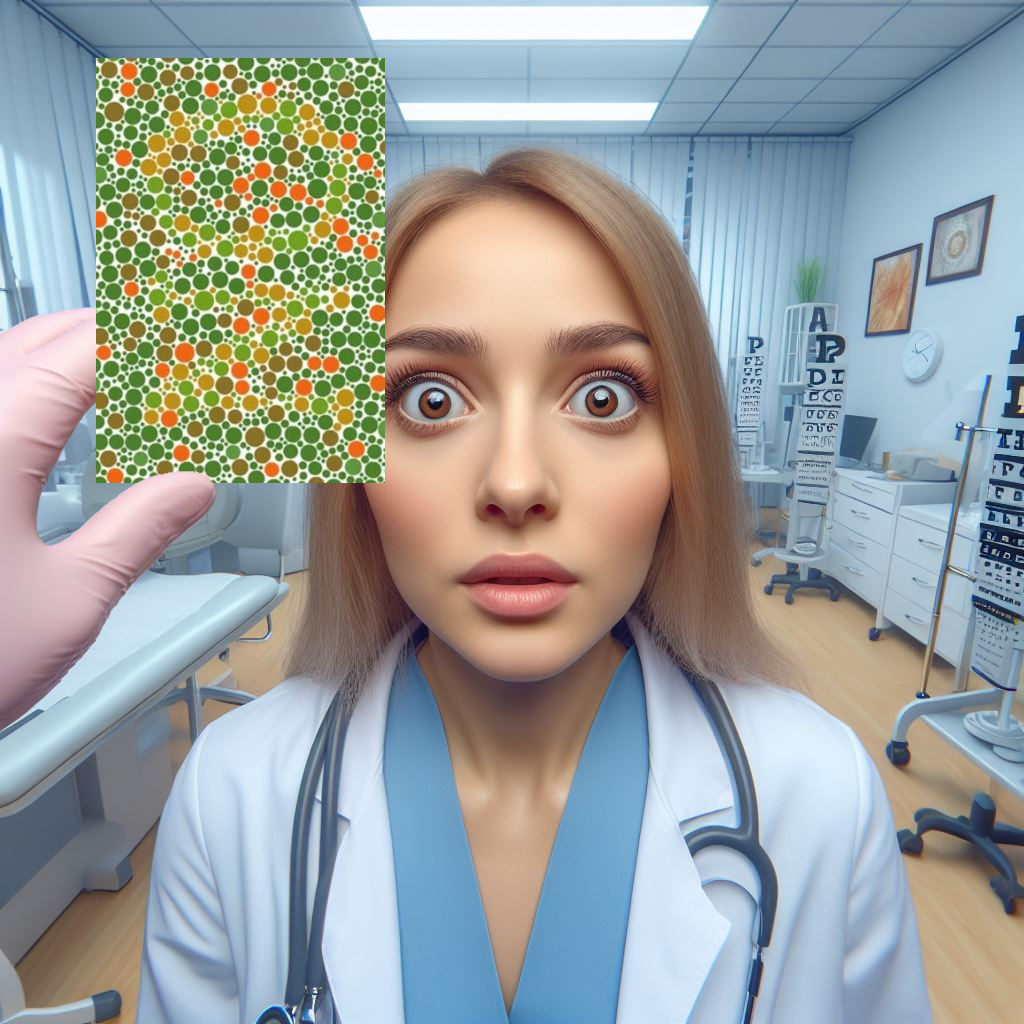
Introduction: Overview of Color Blindness
Color blindness, also known as color vision deficiency (CVD), affects how individuals perceive colors. Let’s delve into the details:
CVD occurs when a person has difficulty distinguishing certain colors. Most commonly, it affects the ability to differentiate between red and green hues. Less frequently, blue and yellow colors may appear indistinguishable. In rare cases, individuals experience complete color blindness, where they perceive the world in grayscale.
Color blindness is primarily caused by deficiencies in the cone photoreceptors in the retina. These cones are responsible for detecting specific wavelengths of light, allowing us to perceive different colors.
Importance of Accurate Diagnosis
Accurate diagnosis of color blindness is crucial for several reasons:
- Early Intervention: Identifying color blindness in children ensures timely intervention. It can impact their performance in school and sports, affecting their confidence from an early age.
- Career Choices: In adults, color blindness may limit career options. Certain professions, such as graphic design or electrical wiring, require precise color perception.
- Quality of Life: Living with color blindness can be frustrating. Proper diagnosis allows individuals to understand their condition and adapt accordingly.
So, while color blindness cannot be cured, understanding its impact and seeking appropriate support can significantly improve the lives of those affected.
Types of Color Blindness
There are seven official diagnoses of color blindness, we’ll mention the main ones:
- Red-Green Color Blindness: The most common type, making it hard to distinguish between red and green.
- Blue-Yellow Color Blindness: In this type, blue and yellow colors may appear similar.
- Monochromacy (Total Color Blindness): Rarely, individuals lack the ability to perceive any colors, seeing the world in shades of gray.
Causes and Prevalence
Color blindness is primarily hereditary, passed down from parents to their children. Genetic mutations affecting cone photoreceptors in the retina lead to color vision deficiencies. Most people with color blindness are born with it, and there is no cure. However, specialized glasses and contact lenses can help enhance color perception.
Men have a higher risk of color vision deficiency than women. Other risk factors include certain eye diseases, health conditions (such as diabetes or Alzheimer’s), and specific medications.
Understanding color blindness allows us to appreciate the diverse ways people perceive the world around them.
Signs and Symptoms of Color Blindness
Color-blind individuals may experience the following:
- Trouble Seeing Colors: They struggle to perceive colors and their brightness in the usual way.
- Inability to Differentiate Shades: Distinguishing between shades of the same or similar colors can be challenging. This difficulty is most pronounced with red and green hues, or blue and yellow.
American Academy of Ophthalmology
Personal Accounts and Examples
Let’s hear from individuals living with color blindness:
- John’s Story: A Career Path Altered
John, a software developer, shares his journey as a color-blind individual. “In my line of work, color-coding is crucial for spotting errors in code. I’ve had to adapt by using text editors that allow customized syntax highlighting. While I’ve overcome many challenges, there are times when I feel like I’m missing out on the full experience of visual designs and artistry.” - Sarah’s Perspective: The Art of Adaptation
Sarah, an artist, discusses her passion for painting. “I love art, but I see colors differently. I often need assistance to ensure my colors are accurate, which can be frustrating. However, my unique perspective has also allowed me to create artworks with unusual color palettes that others find intriguing.” - Chris’ Journey in Education
Meet Chris, a dedicated teacher whose journey in education has been shaped by his unique perspective as a color-blind individual. His story sheds light on the challenges he’s faced and the innovative strategies he’s employed to make learning accessible to all students. Chris associates colors with feelings or objects to explain concepts to kids. For instance, he might describe the color red as ‘the color of a firetruck’ or ‘the feeling you get when you’re excited’.
Diagnosis of Color Blindness
Initial Screening
Eye doctors use various tests to assess color vision. One common method is the Ishihara screening test. Participants view specially designed plates with hidden numbers or shapes made of colored dots. If this initial test indicates color deficiency, further evaluation is necessary.
Comprehensive Testing
For a more detailed assessment, eye specialists may use advanced tools such as the anomaloscope. This instrument allows precise measurement of color discrimination. It helps differentiate between specific types of color blindness and assess severity.
Genetic Counseling
Color blindness often has a genetic basis. Genetic counseling provides insights into inheritance patterns, risk factors, and family history. Understanding the role of genetics helps individuals make informed decisions and cope with their condition.
Living with Color Blindness
Color-blind individuals encounter difficulties in everyday activities:
- Food: Cooking meat to the desired level (rare or well-done) can be tricky. Distinguishing between green and ripe tomatoes or ketchup and chocolate sauce is challenging. Unripe bananas may appear similar to ripe ones due to color confusion.
- Everyday Tech: Devices with red/green/orange LED displays (indicating battery status or standby mode) can cause frustration. Traffic lights and Wi-Fi routers with colored lights may be hard to interpret.
- Workplace and Education: Color blindness can impact career choices, exam performance, and access to education. Employers and schools should consider it as they would any other disability.
Support Systems and Resources
Living with color blindness requires understanding and adaptation:
- Labeling: Label clothes, colored pencils, and other objects based on color.
- Technology: Smartphone apps can assist in identifying colors.
- Community: Online communities provide resources and insights into daily frustrations.
- Visual Aids: Special contact lenses or glasses enhance color perception.
Remember, while color blindness presents challenges, support systems and awareness can make a significant difference.





